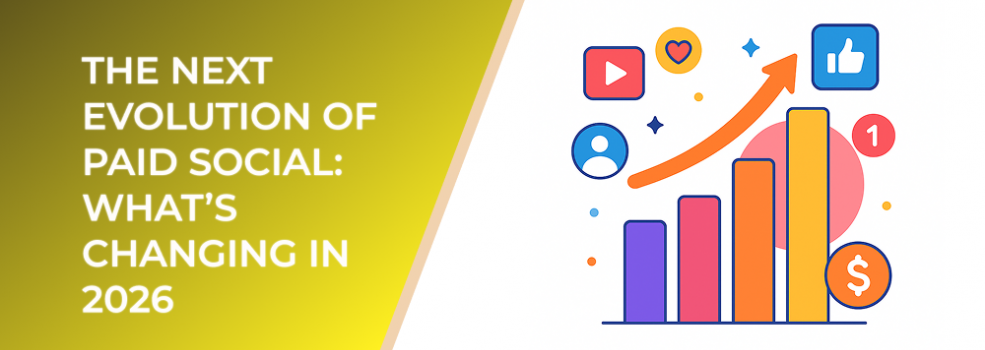Paid social is entering its most significant transition since algorithmic optimization became standard. As audience behavior changes, platforms evolve, and privacy rules tighten, the paid social landscape is reshaping around three pillars: predictive automation, identity‑light targeting, and full‑funnel measurement.
1. Predictive Systems Are Becoming the Default
In 2026, predictive optimization is no longer an advanced setting—it’s the core of campaign performance. Platforms are training models on trillions of interaction points, creating bidding systems that outperform manual strategies across most verticals.
Key statistic: According to recent industry analyses, predictive bidding models improve cost‑per‑action by an average of 18–25% compared to traditional optimization.
The shift also extends to creative selection. Predictive creative rotation increasingly outperforms manual testing. Early 2026 data shows that dynamic creative frameworks produce 22% higher engagement rates across major social networks.
2. The Decline of Traditional Targeting
Interest-based targeting continues to shrink. With global privacy regulations tightening, platforms are removing or consolidating targeting layers.
In their place, audience creation relies heavily on behavior signals and off‑platform contextual data.
Key statistic: By 2026, more than 60% of ad impressions across major social platforms are served using broad or minimal targeting inputs.
Instead of stacking detailed interests, advertisers now rely on modeled audiences, contextual signals, and custom data inputs. Campaign success depends more on data quality and less on micro‑segmenting.
3. First‑Party Data Becomes the Main Lever
With diminishing access to platform-level identifiers, first‑party data is becoming the most reliable targeting and measurement asset.
Brands that embraced early data consolidation are outperforming others in the new environment.
Key statistic: Businesses with unified customer data systems report up to 35% stronger ROAS compared to those using fragmented or platform‑isolated data.
The performance gap continues to widen in 2026 as businesses build audiences based on customer lifecycle stages, purchase behavior, and CRM‑derived intent.
4. Broad-to-Smart Funnel Structures
Advertisers are moving away from overly complex funnel structures. Instead, the top performers in 2026 are embracing simplified, scalable architectures.
A typical modern structure:
-
Broad awareness
-
Predictive mid‑funnel qualification
-
Conversion optimization supported by modeled audiences and first‑party signals
Brands adopting this approach report fewer learning‑phase resets and stronger stability in week‑to‑week performance.
5. Multi‑Platform Paid Social Gains Momentum
2026 marks a shift away from relying on a single platform. Diversification is driven by:
-
Rising CPMs on mature channels
-
Faster user adoption on emerging networks
-
Platform‑specific algorithmic strengths
Key statistic: Over 70% of advertisers in recent surveys allocate budgets across at least three paid social platforms, compared to fewer than 50% just two years ago.
Cross‑platform resilience is now essential for stable year‑round scaling.
6. Measurement Finally Opens Up
With privacy‑safe attribution pipelines maturing, multi‑touch insights are becoming more reliable again.
2026 measurement advancements include:
-
On‑device modeling
-
Privacy‑preserving conversion APIs
-
Hybrid attribution models blending probabilistic and deterministic signals
These systems reduce the disconnect between platform‑reported and backend metrics, improving budget allocation accuracy.
7. Creative Becomes the Ultimate Variable
While algorithms handle optimization and targeting, creative has become the most impactful performance driver.
Trends defining 2026 include:
-
High‑velocity creative testing (10–20 assets per month in active cycles)
-
Short-form motion creatives dominating upper‑funnel performance
-
AI‑assisted production fueling scalable iteration
Key statistic: Advertisers running more than 10 new creatives monthly achieve up to 28% stronger sustained performance than those refreshing quarterly.
Final Thoughts
2026 is shaping up to be a year of simplification powered by increasingly sophisticated technology. The brands that win will be those that adapt to automation, strengthen their data foundations, and prioritize creative excellence.

